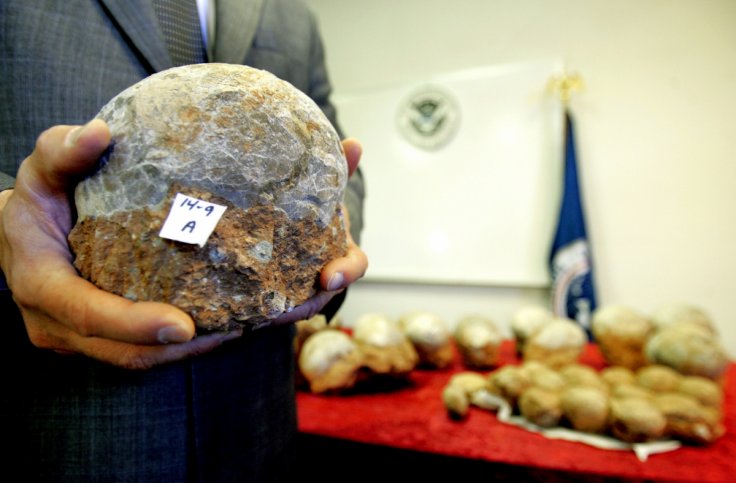
India has grabbed eyeballs of all the dinosaur enthusiasts across the globe with its recent discovery of a dinosaur egg in Balasinor city of Mahisagar district in Gujarat. This latest finding of the egg, which is believed to be about 65 million years old, came during a digging exercise on Saturday evening.
Scientists of the Geological Society of India (GSI) were called to the discovery site in Balasinor, known as the home to one of the world's largest dinosaur fossil sites. According to reports, there is a fossilized dinosaur nesting ground in the city.
The egg was discovered by the locals in broken pieces. But, the villagers have handed over the fossil to the forest department and Mamlatdar. Later, the egg will be handed over to the Geological Survey of India (GSI) for further research to find out whether the egg indeed belongs to the extinct species of the world's largest living being.
Aaliya Sultana Babi, a dinosaur enthusiast, and scion of the Balasinor royal family, visited the place on Sunday. "It was just one egg that was discovered by some laborers on Saturday evening while they were digging rocks probably for the foundation of a house. It's probably a sauropod egg (herbivore)," Babi, who has been closely working with the GSI, state tourism department and paleontologists of the world told The Indian Express.
In the 1980s, the first dinosaur fossil was discovered in Raiyoli village, which is known as the third largest hatchery in the world, near Balasinor. Ever since then, researchers have discovered several fossils of one of the most giant and extinct species.
The researchers say that around six crore years ago, the dinosaurs preferred the belt of Narmada Valley from Balasinor to Madhya Pradesh to lay eggs. According to paleontologists, around seven different species of dinosaurs lived near the belt.
Reports claim that the fossil park in Balasinor found out new species belonging to the Tyrannosaurus Rex family in 2003. The species got the name of Rajasaurus narmadensis due to its existence in the Narmada region around 65 million years ago.









